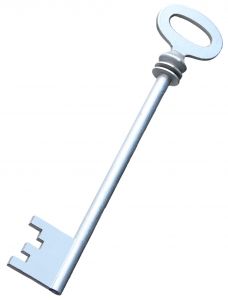
Money is Worthless.
Let me explain.
Money is just a convenient way of expressing the value of an item. It is quite possible to express the value of items in other terms instead. For example, we generally say things like, “That house is worth $500,000 dollars.” Instead we could express this by saying that the house is worth 12,500 ounces of silver, 16,600 gallons of unleaded gasoline, 33,800 bushels of soybeans, 1,000 big, flat screen televisions, 4327 live cattle, or any other of a thousand different things.
The things I listed above (cattle, gasoline, silver, etc.) have value in and of themselves. Money is just paper and is not truly worth anything. It may be easier to wrap our heads around this if we consider what the practical use of an item is if we are not going to trade it for something else. Silver, for example, is used in electronics and jewelry. Milk comes from cows and they can be killed for meat (mmm steak!). Gasoline can be burned for fuel to power houses, cars, etc. But what can money be used for? It’s too full of ink to make good writing paper and it’s too course to use as toilet paper! About the only practical thing you can do with money is to burn it.
Paper money used to be backed up by precious metals. There was a day where you could go to government banks and trade in your paper dollars for gold and silver. This is what made the money actually worth something. This is what gave it value. Saying that a house was worth $500,000 was truly saying that the house could be traded in for a specified amount of gold and silver. Our coins (quaters, nickels, dimes, pennies) used to be made of precious metals as well.
So what does this have to do with wealth creation?
Knowing that money is valueless should cause you to stop and reconsider how you think about assets and investments. The money supply can be manipulated by printing dollars or burning dollars. (The government does both and it is illegal for anyone else to attempt either.) This means that you will better understand the value of an asset or an investment if you compare them to each other. For example, let’s say that average single family home is worth 1,000 ounces of silver today. (I’m using round numbers not accurate numbers to make this simple!) Let’s say that 50 years ago, the average single family home was worth 2,000 ounces of silver. This means that either the value of silver has dropped or the value of a single family house has gone up. Either one is overvalued or one is undervalued. We can determine which one it is by comparing these values against the value of something else such as a barrel of oil or against the S&P 500.
Now for a few points of consideration. 1) You probably don’t want to use a comparison to something such as a television since it doesn’t have a history of being widely traded and therefore there would be a lack of worthwhile data to make a comparison. Things such as the price of a single family home, the S&P 500, gold, and oil make much better comparisons. 2) You have probably already figured out that the value of each of these items (including paper money) fluctuates based on supply and demand. This means that the actual numbers themselves are meaningless. This is why it is prudent to NOT look to dollars for value. Instead, we should compare one class of assets (ex. single family homes) to another class of assets (ex. gold) to yet another class (ex. the S&P 500) and so on to see which class is undervalued or overvalued.
These various classes move in cycles. Michael Maloney calls them “wealth cycles”. The game is to invest in the undervalued asset class and hold it until it becomes overvalued and then move your investments into the next undervalued asset class before the overvalued one drops in value. Doing this well results in significant wealth accumulation and has nothing to do with money per se.
Hopefully, this basic overview of wealth cycles and the true value of money will help you make better investment decisions as you continue to educate yourself on how to create wealth for you and your family
For more information, check out Michael Maloney’s book Gold & Silver or visit his website at WealthCycles.com









